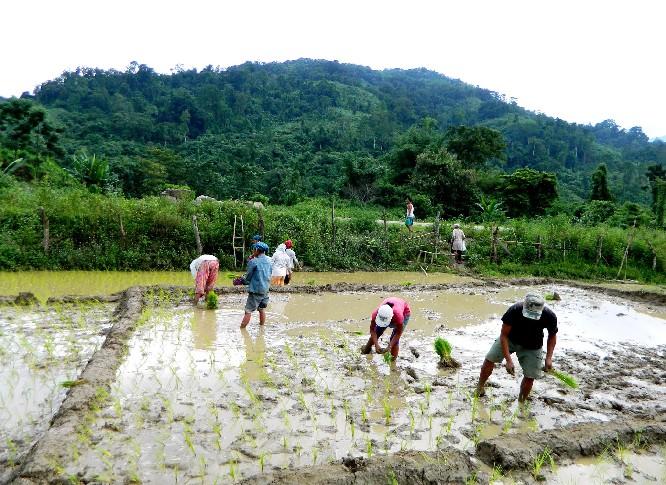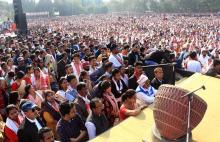Fishery and mustard cultivation may be best adaptation measures as livelihood for flood affected people in Assam. Rice cultivation (Hali Kheti) the main livelihood of people has been affected by flood waters and erosion for years and there has been no exception this year. The state is ravaged by flood waters severely and acres of land are covered with sand carried by flood waters. A study carried out by Center for Conservation Education & Research (CCER), NorthEast India, reveals that with investment of comparatively less money and resources in these sectors, farmers can improve their economic condition and acquire a livelihood.
Since pisciculturists are being hit by recurrent floods most are discouraged to practice it again. The government and allied agencies must provide aid to pisciculturists. Pisciculturists who opt for cultivation must be encouraged. In this regard specific program, schemes, technology intervention, pre-planning and post-flood redress measures are required to address the issues. The agricultural department of Assam should organize trainings and workshops among flood effected farmers and government officials strategize for harnessing fish production potentialities in flood-affected areas of the state. Assam is bestowed with vast and varied aquatic life covering spannning hectares that support plenteous fresh water fish biodiversity. In terms of water spread area and fish biodiversity, Assam is the richest among the northeastern states. Despite this, fish production in the state is insufficient to meet its own demand. Around 20,000 MT of fish are imported from other states each year. Infrastructure and technological development, favourable topography, favorable agroclimatic conditions and advantageous linkages with the other parts of the country qualify Assam as one of the most potential states.
Dr Birendra Kumar Bhattachrya, a fishery scientist, said that a rich harvest can be expected this year. According to Bhattacharya, there are enough water in natural water bodies, marsh lands, beels (lake) and other wetlands where seeds can be cultivated for better harvesting. Exactly the suggests to the government and other agencies to breed and distribute fish seeds to the flood effected farmers nearer to natural and private water bodies.
Assam has about 5.25 lakh hectares of flood-affected area. Though rice is the major crop, farmers have taken up pisciculture to augment their income. The Assam Agriculture University can organize workshops which can prepare a roadmap for sustainable fish production. He believes that workshops can prepare a roadmap for sustainable fish production where speakers and resource persons deliberate on the thematic areas to develop a strategy for the future.
The government is expected to provide seeds, equipments and other resources for master cultivation where rice paddy is destroyed by flood waters and sand deposits. Lakhimpur and Dhemaji are the worst effected districts where only few hectares of cultivable land is left without silt deposits. These sand covered lands are best for mustard cultivation. Oil vegetable is best for the environment and our climatic condition. Agencies including the agricultural department should emphasize on proper land preparation, proper time of sowing, selection of better quality seeds for a good yield.
It is to be noted that a variety of mustard species (either hybrid or conventional) must be used which is already harvested in sandy land and climate of northeastern Assam. If seeds are used without a previous good harvest result, there could be a fear of futile production. There are set examples of good harvests on the bank of the River Gai. The seeds can be used to yield a healthy harvest in the flood affected lands.
CERN will give update very soon on search for ‘God particle’. The elusive particle which is the theoretical missing link in the standard model of physics believed to be what gives objects mass. The European Organisation for Nuclear Research said few days ago it may announce on 4 July whether tests with its atom- smasher have found the elusive particle. The theory behind so called God particle is that mass does not derive from particles but less, if it all, with others. Researchers at the European Organization for Nuclear Research (CERN) are using their Large Hadron Collider (LHC), the world's biggest particle accelerator, to try to prove that the mystery particle really exists....





Add new comment